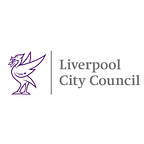Deprivation Factfile
You often hear the word ‘deprivation’ associated with cities. It’s a word that no city wants to be defined by.
The Indices of Deprivation 2019 have just been released, which reveal how an area is doing when it comes to factors such as income, health, housing and crime. The information is pulled together from a range of data sources over the last few years.
There are record levels of investment coming into Liverpool, so it is very disappointing to report that the city has the second highest number of areas in the most deprived 10% nationally, and is now the 4th most deprived local authority in the country.
Let’s take a closer look at the figures…
The data measures relative deprivation based on 298 ‘lower super output areas’ across the city, with an overall score based on seven different domains of deprivation which are: income, employment, education, health, crime, housing and the living environment.
Patterns of deprivation across larger areas can be complex, so there is no single summary measure that is the ‘best’ measure to use in measuring deprivation. At the local authority level summary scores have been produced based on:
- Average Rank — summarises the average level of deprivation across an area, based on the population weighted ranks of all neighbourhoods within it.
- Average Score — summarises the average level of deprivation across an area, based on the scores of all neighbourhoods contained within it.
- Proportion of Lower Super Output Areas (LSOAs) in the most deprived 10% nationally.
Liverpool’s rankings have got worse since the figures were last compiled in 2015.
- For average rank, Liverpool is considered the 4th most deprived local authority in England (previously ranked 7th in 2015). We are behind Blackpool, Manchester and Knowsley.
- For average score, Liverpool is considered the 3rd most deprived (previously ranked 4th).
- Liverpool has the second highest number of areas in the most deprived 10% nationally (145 out of 298), with only Middlesbrough having more (previously ranked 4th).
- Parts of Everton, Kirkdale and County are among the top 1% most deprived in the country
Liverpool’s rankings nationally, based on average score for the seven indices that comprise the overall domain, are:
- Income — 4th
- Employment — 5th
- Education, Skills and Training — 29th
- Health Deprivation and Disability — 3rd
- Crime — 22nd
- Barriers to Housing and Services — 280th
- Living Environment — 5th
Of the two supplementary indices that have been produced, Liverpool is ranked 4th most deprived for Income Deprivation Affecting Children, and 8th most deprived for Income Deprivation Affecting Older People nationally.
Some 48% of our residents, and 57% of our children, live in the most deprived 10% areas in the country.
What is Liverpool City Council doing to tackle the issues?
Our Inclusive Growth Plan is about making Liverpool one of the best cities in the world — known for its creative reinvention, passion, resilience, and its commitment to community and fairness. The plan provides an ambitious vision for Liverpool: a strong and growing city, built on fairness. Many of the issues are beyond the responsibility of the city council and require work with organisations such as the NHS, education and skills providers and housing associations, and strong partnerships are being developed. In recent years, 22 new schools have been built, hundreds of properties have been refurbished in places such as Anfield, the Welsh Streets and Norris Green and the city has reduced smoking prevalence rates. This is against the backdrop of reduced central Government funding for public services since 2010 (63% for the city council) due to austerity.
LAST UPDATED: October 2019
